Suchergebnisse
Energy Technologies at the Cutting EdgeInternational Energy Technology Collaboration IEA Implementing Agreements 2007

Diese Publikation gibt einen guten Überblick über die Aktivitäten des Technologieprogramms der IEA. Alle 41 derzeit laufenden Forschungsprogramme ("Implementing Agreements") werden auf jeweils einer Seite beschrieben, wobei die Darstellung ausgewählter aktueller Schwerpunkte im Bereich Forschung, Entwicklung, Markteinführung und Informationsverbreitung im Mittelpunkt steht. Abgerundet wird die 110-seitige Publikation - die auch kostenfrei von den IEA-Websiten runtergeladen werden kann - durch eine umfassende Erläuterung der Ziele und Funktionsweise des Technologieprogramms ("IEA Framework for Energy Technology Co-operation"). Übersichtliche Darstellung, welche Technologien bzw. Themen von welchen Ländern behandelt werden, geben einen guten Überblick über die wirklich weltweit venetzten Aktivitäten. Österreich ist dabei mit der Beteiligungen an 15 Programmen im guten Mittelfeld angesiedelt.
Englisch
IEA Bioenergy Task 39 Newsletter #32 (2012)
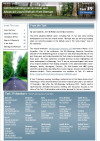
Commercializing Conventional and Advanced Liquid Biofuels from Biomass
Englisch, 17 Seiten
Downloads zur Publikation
Trends in photovoltaic applications 2011

Survey report of selected IEA countries between 1992 and 2011
IEA-PVPS
Englisch, 48 Seiten
Downloads zur Publikation
Aktive Verteilnetze

Österreichische Forschung, Modellierung und Demonstration dür die Smarte Stromversorgung der Zukunft
1/2013
Herausgeber: BMVIT
Deutsch, 6 Seiten
Downloads zur Publikation
Institutionelle Innovationsstrategien
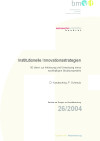
60 Ideen zur Initiierung und Umsetzung eines nachhaltigen Strukturwandels
Schriftenreihe
26/2004
D. Kanatschnig, P. Schmutz
Deutsch, 86 Seiten
Downloads zur Publikation
Homeservices aus der Fabrik der Zukunft
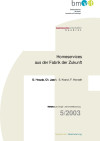
Schriftenreihe
05/2003
G. Hrauda, Ch. Jasch, S. Kranzl, F. Horvath
Deutsch, 243 Seiten
Downloads zur Publikation
IEA SHC Task 25: "Solar Assisted Air Conditioning of Buildings"

Die Broschüre behandelt das Thema "Solar Assisted Air Conditioning of Buildings" von Grund auf, über Beispiele und Erfahrungen aus der Praxis, bis hin zum IEA Task 25 Design Tool und einem Ausblick in die Zukunft.
Englisch
Wood Plastic Composites - WPC

future-proof materials from wood composites- projects within the "Factory of tomorrow" subprogram
Forschungsforum
2/2007
Herausgeber: BMVIT
Englisch, 6 Seiten
Downloads zur Publikation
Research and Innovation for Heating and Cooling with Renewable Energy Sources

position paper related to biomass, geothermal energy, solar thermal energy and heat pumps in order to support persons responsible for Austrian energy research programs to define main research and innovation topics for renewable heating and cooling within these programs
Schriftenreihe
28/2014
Englisch
Sol4 Büro- und Seminarzentrum Eichkogel
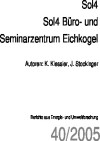
Schriftenreihe
40/2005
K. Kiessler, J. Stockinger
Deutsch, 446 Seiten
Downloads zur Publikation
IEA Bioenergy Task 39 Newsletter #30 (2012)
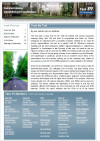
Italy - Current Biofuel Policies and R&D Developments
Englisch, 18 Seiten
Downloads zur Publikation
A Network For Energy Saving

Municipal Energy Saving Programs as an Educational Project
Forschungsforum
1/1994
Herausgeber: BMVIT
Englisch, 6 Seiten
e-genius: Die Open-Content-Lernplattform
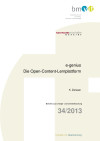
Schriftenreihe
34/2013
K. Zwiauer
Herausgeber: BMVIT
Deutsch, 43 Seiten
Downloads zur Publikation
Erstes Einfamilien-Passivhaus im Altbau
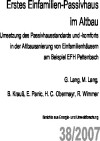
Umsetzung des Passivhausstandards und -komforts in der Altbausanierung von Einfamilienhäusern am Beispiel EFH Pettenbach
Schriftenreihe
38/2007
G. Lang, M. Lang, B. Krauß, E. Panic, H. C. Obermayr, R. Wimmer
Herausgeber: Bundesministerium für Verkehr, Innovation und Technologie
Deutsch, 157 Seiten
Downloads zur Publikation
Sustainable Repair Services
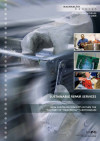
New Austrian Concepts within the "Factory of Tomorrow" Subprogram
Forschungsforum
1/2008
Herausgeber: BMVIT
Englisch, 6 Seiten
Downloads zur Publikation
IEA Bioenergy Task 39 Newsletter #28 (2011)
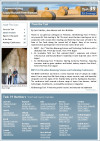
Commercializing Liquid Biofuels from Biomass
Englisch, 20 Seiten
Downloads zur Publikation
IEA-SHC Task39 Newsletter No.14 - May 2014

Herausgeber: IEA-SHC Task39
Englisch, 10 Seiten
Morphology of a City - The Austrian Built Environment
This study uses several data sources to analyze the effects of the research programe "Haus der Zukunft" ("Building of Tomorrow") on the Austrian housebuilding industry and the built environment.
The development of fused wood-only parquet elements
The development of the wood fusing technology to an innovative, ecological process of production of wood-only parquet elements, which do not contain any wood foreign substances as glue or thermoplastics.
Gründerzeit mit Zukunft - Subprojekt 6: Dissemination
Ziel der Dissemination war es, eine zielgruppengerechte und umfassende Verbreitung der innovativen Lösungen bei der gesamtheitlichen Modernisierung von fünf Gründerzeitgebäuden aus dem Leitprojekt "Gründerzeit mit Zukunft" zu erzielen und damit komplexes Know-how zu transportieren und handlungsauslösende Impulse für die Generierung weiterer Projekte zu setzen.
